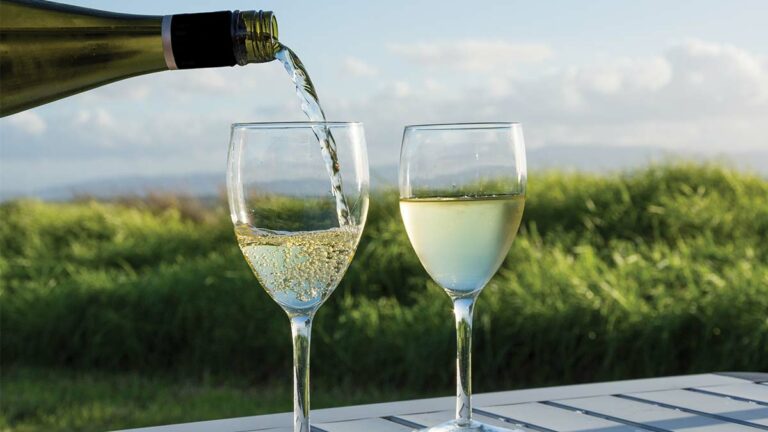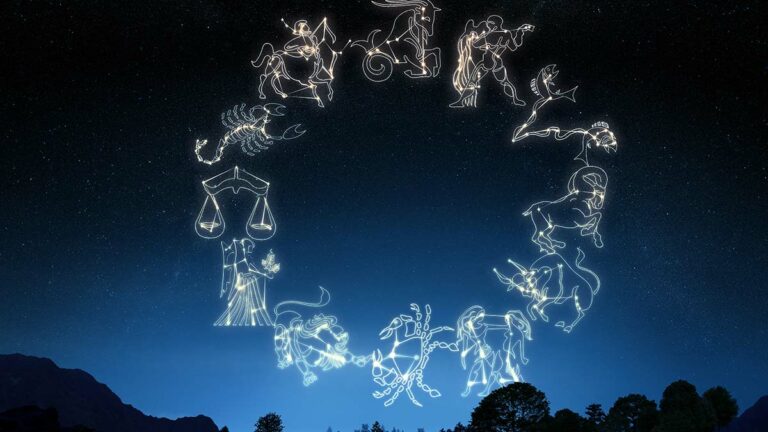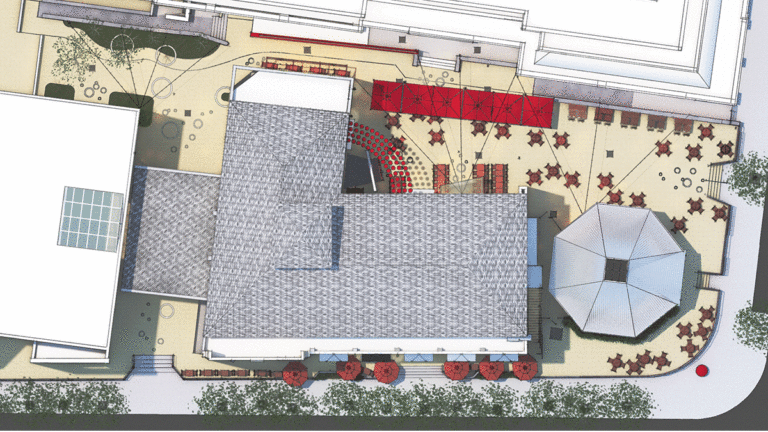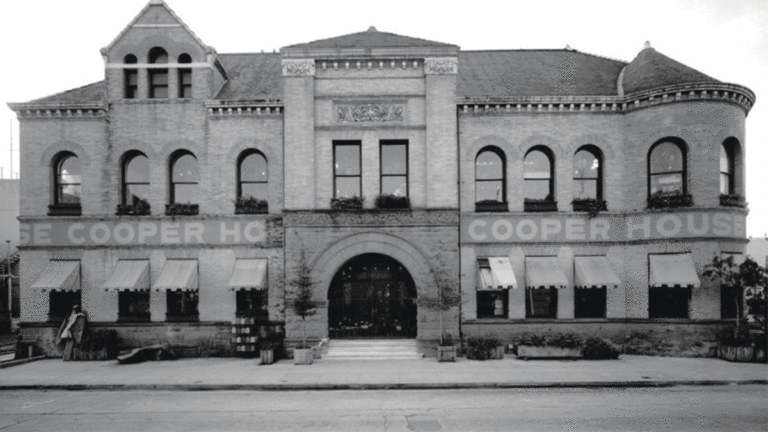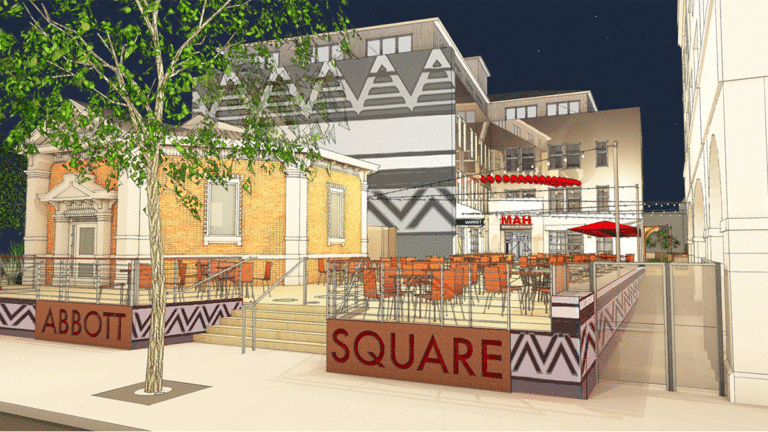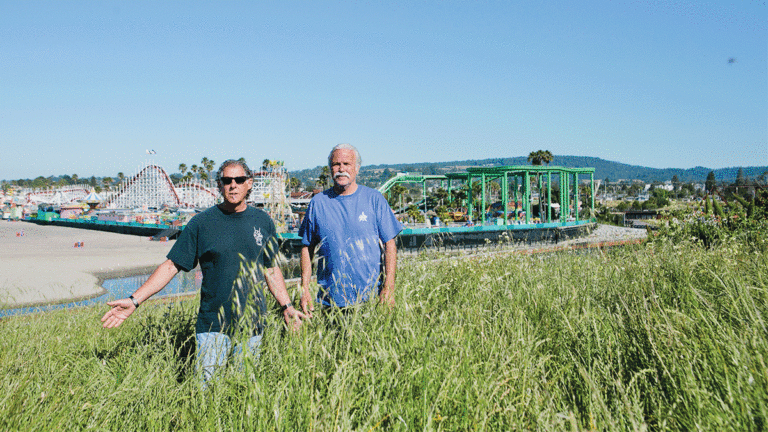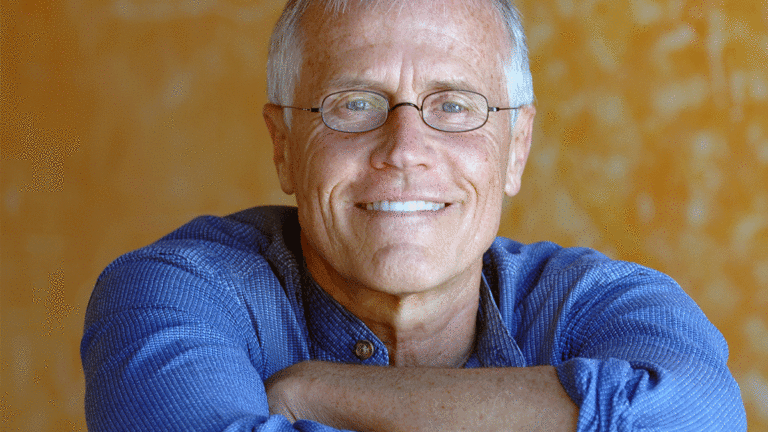Surfboard shaper Bob Pearson grins as he talks about the celebration for the three Hawaiian princes who first introduced surfing to the mainland 132 years ago, here in Santa Cruz at the San Lorenzo River mouth.
Pearson, owner of Pearson Arrow Surf Shop, made it his mission to surf a board like the ones those princes did. He constructed 13 Hawaiian-type surfboards, including a couple of 17-foot olos that he carved out of redwood, just like the ones ridden in 1885. He finally had the chance to ride one two years ago, as the Hawaiian royal family and throngs of Santa Cruzans watched from the shore. Pearson, who’s surfed all over the world, found the finless 240-pounder hard to steer.
“Lay a telephone pole in the water, and go surf it. That’s what it was like,” Pearson says.
Kim Stoner, a surf historian and longtime friend of Pearson’s, listens and waits patiently to jump in. Whenever they tell stories together, Pearson and Stoner interrupt each other often, and with childlike exuberance. They’re incessantly making sure the other doesn’t forget something or trying to move the conversation along.
Their current passion is a park plan they’re working on to honor the three princes at a small patch of weeded land in between Seabright Beach and that same river mouth.
“Right now it’s an empty lot that’s getting trashed. It’s all about, ‘how can we make this a little safer, a little more attractive?’” Pearson says.
“And historical,” Stoner adds.
The idea is to create a plaque and a bench or two, possibly some erosion control and maybe a fresh patch of grass. Pearson and Stoner have been working with historian Geoffrey Dunn and longtime surfer Barney Langer on the proposal. They have been in contact with officials from the city and the state parks department, which owns the land.
Stoner says a sense of mana—a Hawaiian word for spirit—and ohana—meaning family—guides everything they’re doing.
Calling a Bluff
It’s a warm Tuesday afternoon, and Greg Cole, a retired architect, and I are standing out on a cliff that stretches out toward the ocean from what could one day be Princes of Surf Park, as he excitedly points in every direction. “At night, the reflections on the water are simply beautiful,” he explains.
This is a great vantage point, he notes, to gaze at UCSC, the Santa Cruz Beach Boardwalk, the wharf, Monterey, both lighthouses, and the boats sailing past. Cole is wearing an orange Hawaiian shirt and green cargo shorts. Salsa Picante, his Lhasa Apso/terrier mix, is sniffing around the cliff, having followed us out the door of his East Cliff house and through a hole in the fence that leads down the rough path.
Cole had big plans for the area, and used to talk about his vision with Pearson and Stoner. He would love to pave over the cliff and put some kind of retaining wall around it, he says, to go with the park—a vision for San Lorenzo Point that the Santa Cruz Sentinel covered in February. Cole had other ideas, too, for how to improve the area, some of them ambitious—like building a surf statue to honor the princes, changing traffic direction on part of East Cliff Drive, and adding new staircases to Seabright Beach to slow erosion.
He claims a local engineering firm told him the bulk of the walkway work at San Lorenzo Point could be done for $500,000, and he felt this could be the best opportunity to save the cliff.
But some community members say they weren’t keen on the scope or the process. Eventually, the other guys in the group stopped calling, Cole says. The others don’t want to get into specifics about why they aren’t all still working together. But like any other surf-related dispute, it appears there may have been some “strong personalities” in the discussions, says longtime surfer Pat Farley, who lives down the street and is ambivalent about the whole idea himself.
At one point, Cole recalls that Barney Langer suggested that he try to chair the meetings instead. But Cole admits he didn’t like the idea of someone else managing the details.
“I told him, ‘No, I’m still the chair,’” Cole remembers. “‘So now I’m here all by myself.’”
Looking Out
Farley was never crazy about the idea for a walkway or a statue out on San Lorenzo Point. But he admits that he isn’t sure about the idea of just a plain old park, either.
“It’d be nice to get all the fox tails out of there, rather than having people shoot up in the bushes in there. I don’t know if a park would bring more of them or not,” says Farley, who paddles out in the river mouth religiously, whenever it’s breaking—up to three times a day. That used to happen only a few weeks a year, but this past winter, heavy rains built up a massive sandbar, providing five months of surfing, and 67-year-old Farley is practically looking forward to this extended season being over.
Rumors have swirled, on social media and out in the water, about the park idea, as neighbors and surfers argue about how big and ugly they heard it might be. Pearson says most of the opposition is rooted in misunderstanding and fears of an overbearing statue that even he doesn’t want.
“I don’t care what you do—give everyone $100—someone’s going to be mad at you,” he says. “There are a couple people who are upset because what they heard is misinformation.”
We started looking into the park a month ago, after a discontented tipster emailed GT earlier this spring, insisting we write a story about the plan, which she felt was too ambitious. Sure enough, when I called her back after learning more about the actual proposal for a plaque, she laughed it off in relief.
Pearson, Langer and the rest of group will soon start making the rounds and getting more input for Princes of Surf Park.
“If in fact that is what we’re going to call it,” says Langer, who’s been focused on organizing a 25th anniversary celebration for the West Cliff surf statue for Saturday, May 27. After that, he expects to spend more of his time on the park. “We’ll have more to say after Memorial Day. Seriously, we’re just getting started.”


